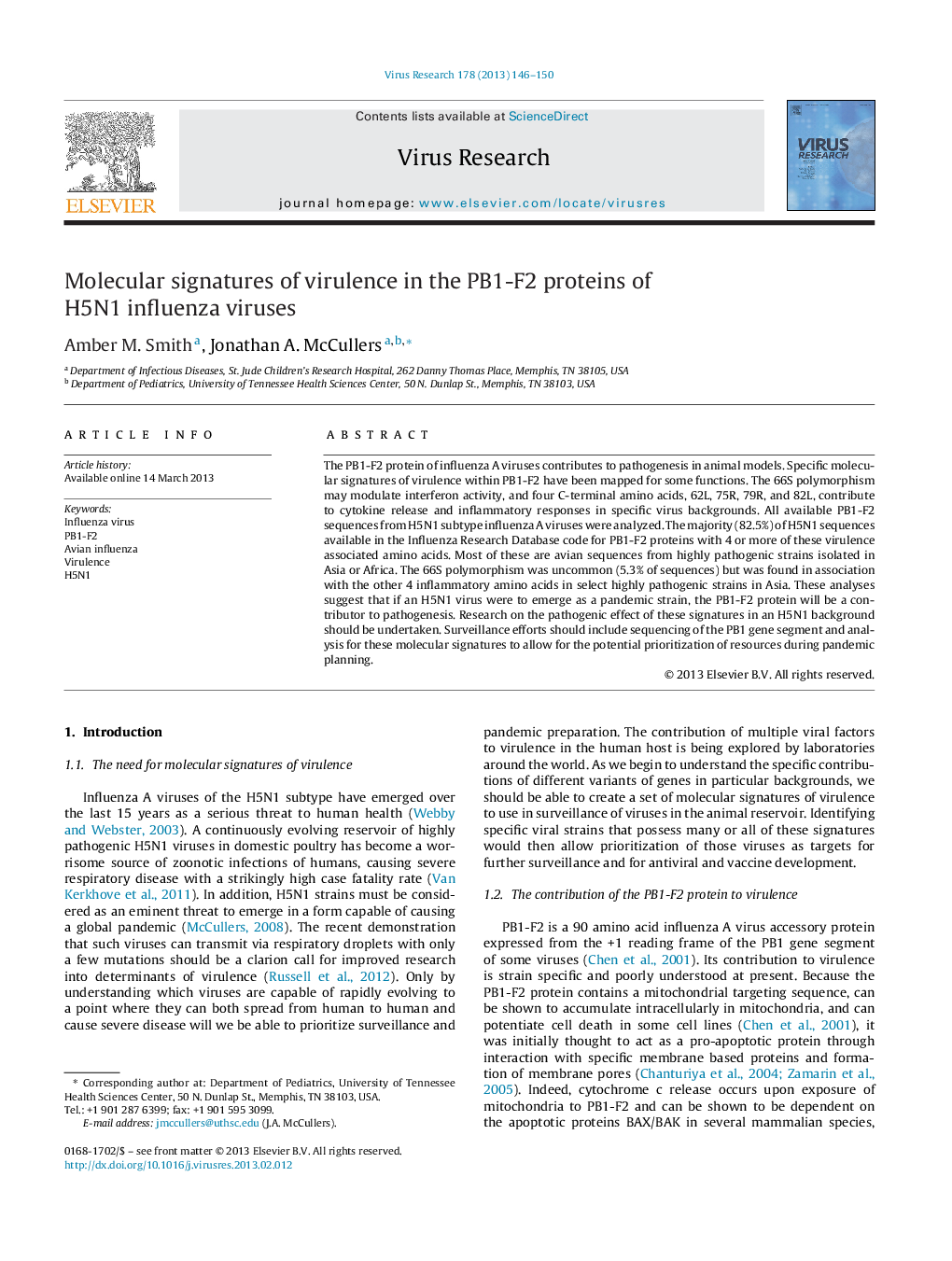| Article ID | Journal | Published Year | Pages | File Type |
|---|---|---|---|---|
| 3428548 | Virus Research | 2013 | 5 Pages |
The PB1-F2 protein of influenza A viruses contributes to pathogenesis in animal models. Specific molecular signatures of virulence within PB1-F2 have been mapped for some functions. The 66S polymorphism may modulate interferon activity, and four C-terminal amino acids, 62L, 75R, 79R, and 82L, contribute to cytokine release and inflammatory responses in specific virus backgrounds. All available PB1-F2 sequences from H5N1 subtype influenza A viruses were analyzed. The majority (82.5%) of H5N1 sequences available in the Influenza Research Database code for PB1-F2 proteins with 4 or more of these virulence associated amino acids. Most of these are avian sequences from highly pathogenic strains isolated in Asia or Africa. The 66S polymorphism was uncommon (5.3% of sequences) but was found in association with the other 4 inflammatory amino acids in select highly pathogenic strains in Asia. These analyses suggest that if an H5N1 virus were to emerge as a pandemic strain, the PB1-F2 protein will be a contributor to pathogenesis. Research on the pathogenic effect of these signatures in an H5N1 background should be undertaken. Surveillance efforts should include sequencing of the PB1 gene segment and analysis for these molecular signatures to allow for the potential prioritization of resources during pandemic planning.
► Most H5N1 PB1-F2 sequences code for 4 or more amino acids found to contribute to inflammation and virulence in previous studies. ► A small but significant percentage (∼5%) code for the N66S mutation associated with interferon inhibition. ► A cluster with all 5 virulence associated signatures was found in Cambodia. ► We have revised the manuscript to address concerns of the reviewers.
